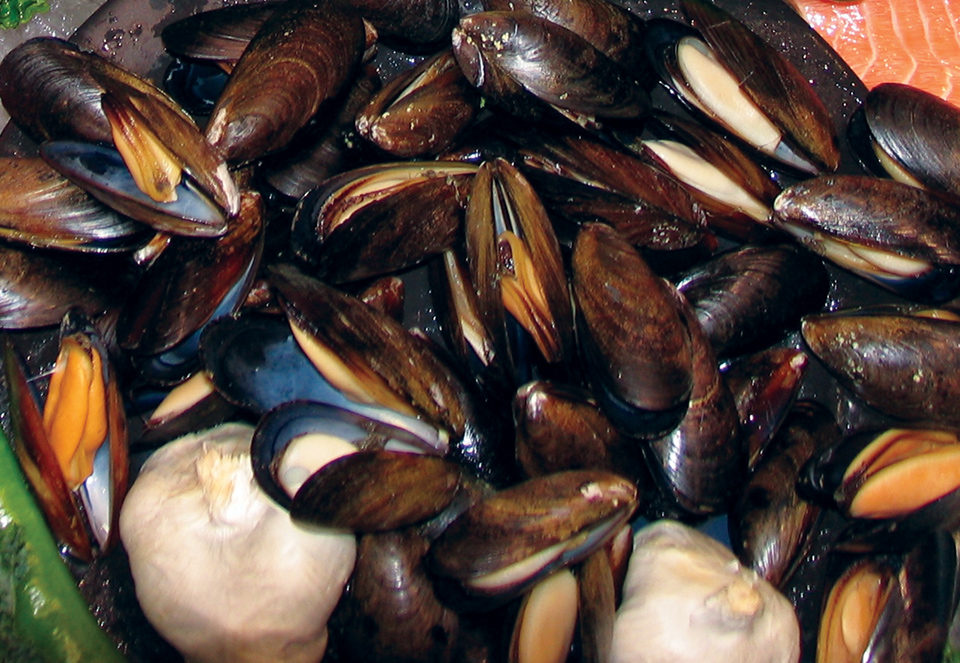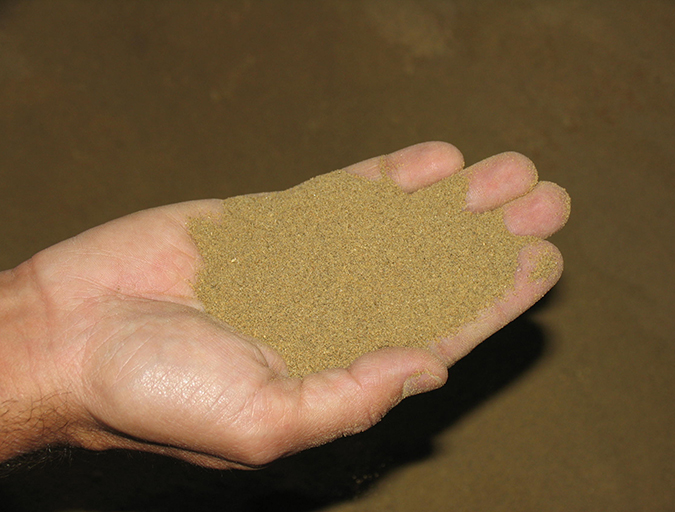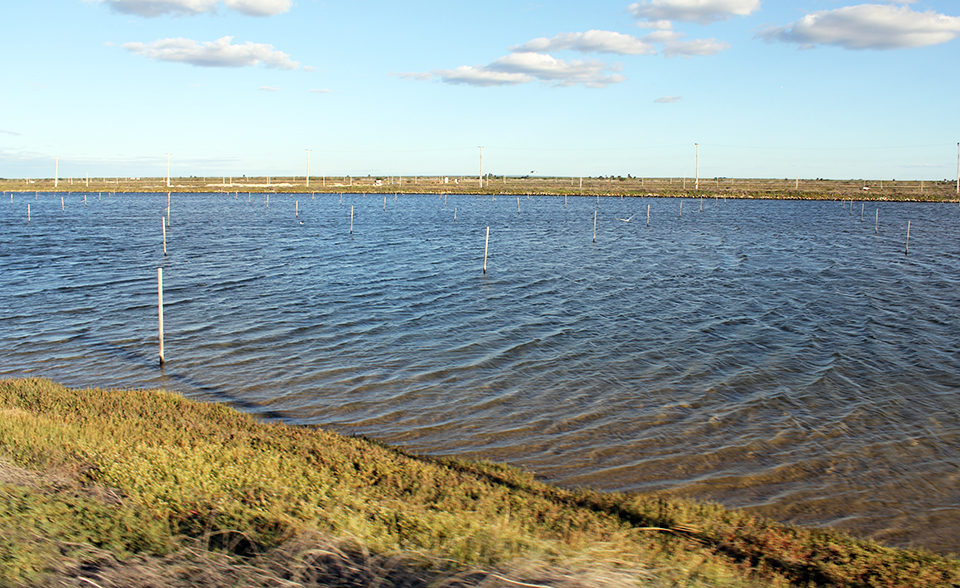Understand risks associated with consuming raw seafood

The microflora in the estuarine and marine environments include various members of the family Vibrionaceae, some of which are pathogenic to humans and constitute a potential health threat for consumers of raw or partially cooked mussels.
It is essential to understand the distribution of bacterial species – especially opportunistic pathogens – in the marine environment in order to predict and prevent bacterial gastroenteritis transmitted by seafood. Although improvements in postharvest treatments such as depuration, high-pressure processing, irradiation, and thermal pasteurization reduce the potential health hazard, it is still important for compromised individuals to understand the risks associated with consuming raw seafood.
Vibrio research
The vibrios constitute a considerable part of marine halophilic bacterial populations, which require high concentrations of salt for growth and performance. In the past 20 years, research on medical, environmental, and taxonomic aspects of Vibrio species has expanded exponentially.
Environmental research has indicated that ecological parameters such as nutrient availability, temperature, and salinity influence the presence and persistence of different Vibrio species in the sea. Vibrios are found less frequently when the temperature drops and salinity increases. However, temperature, dissolved oxygen, and salinity are interactive, so the effects of a single environmental parameter are difficult to assess.
More than 35 species of Vibrio microorganisms have been identified, and more species are being added as new scientific information becomes available. In addition to V. cholerae, the most widely known pathogenic vibrio, a number of Vibrio species can cause disease.
Vibrio parahaemolyticus, V. minicus, and V. vulnificus are food-poisoning bacteria frequently isolated from seawater and shellfish. Among halophilic vibrios, V. alginolyticus, V. fluvialis, and V. metschnikovii are also pathogenic to humans, while V. anguillarum is a pathogen that affects fish and other aquatic animals.
Many human-pathogenic species have distinct clinical features, pathogenic mechanisms, epidemiological characteristics, and ecological positions. However, in recent years, other microorganisms now classified as Aeromonas and Plesiomonas have often been responsible for enterotoxic episodes.
Vibrios and shellfish
V. parahaemolyticus has been reported responsible for one-fourth of all gastrointestinal pathologies caused by food. In the United States, it caused 14 food-poisoning outbreaks between 1971 and 1978. Though Vibrio vulnificus does not cause outbreaks, it is responsible for very severe syndromes that are fatal in 50-60 percent of cases.
In 1998, shellfish were incriminated in 7.1 percent of the 84 reported foodborne disease outbreaks in Italy. European Directive 492 per 91 prescribed that bivalve mollusks marketed for human consumption should be raised in waters that meet certain microbiological requirements defined as Type A or, if originating elsewhere, should be run through a depuration procedure.
In order for bivalve mollusks to be deemed fit for human consumption, legislation requires that they contain less than 300 fecal coliforms (or less than 230 Escherichia coli) per 100 grams of shellfish meat and intervalve water, and no Salmonella species in 25 g of meat. In the United States, the fecal coliform median (or geometric mean MPN) of the water sample results shall not exceed 14 per 100 millimeters, and the estimated 90th percentile shall not exceed 43 MPN per 100 millimeters for a five-tube decimal dilution test or 49 MPN per 100 millimeters for a three-tube decimal dilution test.
However, it has been noted repeatedly that in these products, there is no close correlation between the presence of microorganisms of fecal origin and the presence of vibrios that are potentially pathogenic for humans.
In coastal environments, a direct relationship exists between the consumption of raw or partially cooked shellfish and the occurrence of episodes of human intestinal and extraintestinal infections attributed to some Vibrio species. Mollusks are theoretically an excellent transmission vehicle because they are filter-feeding organisms and can concentrate bacteria.
It has been estimated that one in 2,000 meals of raw shellfish results in disease, giving these shellfish a reputation as one of the most hazardous foods. The most-studied mollusk species are the Pacific oyster, (Crassostrea gigas), and Eastern oyster, (C. virginica).
Italy studies
In studies in Italy, samples of (Mytilus galloprovincialis) mussels were collected in central Italy from approved coastal sites located on the Adriatic Sea to be examined for the presence of Vibrio parahaemolyticus and the occurrence of pathogenic strains. Thirty-five V. parahaemolyticus strains were isolated out of 144 samples, and four of the isolates were considered pathogenic after performing a genetic analysis.
Another Italian study of the same mussel species obtained from retail stores in the Puglia region revealed that V. parahaemolyticus and V. vulnificus were found in 7.83 percent and 2.83 percent, respectively, of 600 samples. There were no significant differences among vibrios present in the mussels during the three-year survey.
A third study of mussel farms in Italy showed that a total of 125 vibrios from 152 isolates were identified as Vibrio fluvialis (55 strains), V. alginolyticus (40 strains), V. parahaemolyticus (11 strains), and V. mimicus (nine strains). The remaining 27 isolates were not identified.
A fourth study of mussels and water collected in 30 sampling sites in the Ionian Sea revealed that V. alginolyticus constituted the predominate component of the total culturable vibrios. Some Vibrio species such as V. mediterranei, V. parahaemolyticus, V. diaztrophicus, V. nereis, and V. splendidus were present in both the water and the mussels. Selective retention in mussels, however, was demonstrated for V. vulnificus, V. cincinnatiensis, V. orientalis, V. anguillarum, V. marinus, and V. hollisae.
A fifth study, performed over a two-year period in which 726 bacterial strains were isolated, showed that 46.9 percent belonged to the Vibrio genus, 29.0 percent was of the Aeromonas genus, and the remaining 23.3 percent was made up of the Pseudomonas, Flavobacterium, Pasteurella, Agrobacterium, and Ochrobacterium genera.
Norwegian study
A Norwegian study of 885 samples of blue mussels, (Mytilus edulis), showed that V. parahaemolyticus, V. cholerae, and V. vulnificus were isolated at 10.3 percent, 1.0 percent, and 0.1 percent, respectively. Four of the V. parahaemolyticus samples contained one of the major virulent genes.
Netherland studies
A study of Campylobacter contamination of unspecified mussels species in the Netherlands revealed that over 90 percent of the contamination was C. lari. Other Campylobacter species were C. jejuni, C. coli, C. upsaliensis, and C. hyointestinalis.
The study was initiated because Campylobacter is a common bacterial pathogen that causes enteritis in humans worldwide. Specifically, Campylobacter jejuni and C. coli account for the majority of enteric infections in humans. Campylobacter lari appears to be widely present in the environment, but is rarely reported as a human pathogen. During recent years, a very limited number of cases of C. lari have been described.
(Editor’s Note: This article was originally published in the November/December 2007 print edition of the Global Aquaculture Advocate.)
Now that you've reached the end of the article ...
… please consider supporting GSA’s mission to advance responsible seafood practices through education, advocacy and third-party assurances. The Advocate aims to document the evolution of responsible seafood practices and share the expansive knowledge of our vast network of contributors.
By becoming a Global Seafood Alliance member, you’re ensuring that all of the pre-competitive work we do through member benefits, resources and events can continue. Individual membership costs just $50 a year.
Not a GSA member? Join us.
Author
-

George J. Flick, Jr., Ph.D.
Food Science and Technology Department
Virginia Tech/Virginia Sea Grant (0418)
Blacksburg, Virginia 24061 USA
Tagged With
Related Posts

Health & Welfare
A holistic management approach to EMS
Early Mortality Syndrome has devastated farmed shrimp in Asia and Latin America. With better understanding of the pathogen and the development and improvement of novel strategies, shrimp farmers are now able to better manage the disease.

Aquafeeds
A look at protease enzymes in crustacean nutrition
Food digestion involves digestive enzymes to break down polymeric macromolecules and facilitate nutrient absorption. Enzyme supplementation in aquafeeds is a major alternative to improve feed quality and nutrient digestibility, gut health, compensate digestive enzymes when needed, and may also improve immune responses.

Aquafeeds
A look at the SME controlled extrusion process
A study was conducted using a Twin-Screw Extruder equipped with Specific Mechanical Energy (SME) and Density Control valves, to determine the effect of SME on the water stability of shrimp feeds. Further research is needed to evaluate the performance.

Health & Welfare
AHPN inferences based on behavior of vibrio bacteria
Vibrio parahaemolyticus, a strain of which is the cause of acute hepatopancreatic necrosis (AHPN), has both virulent and benign strains. This strain colonizes the stomachs of shrimp by the formation of a biofilm, which protects it from antibiotics and other potential treatments.

